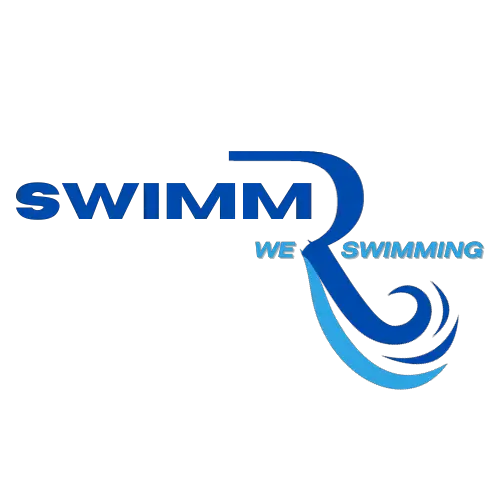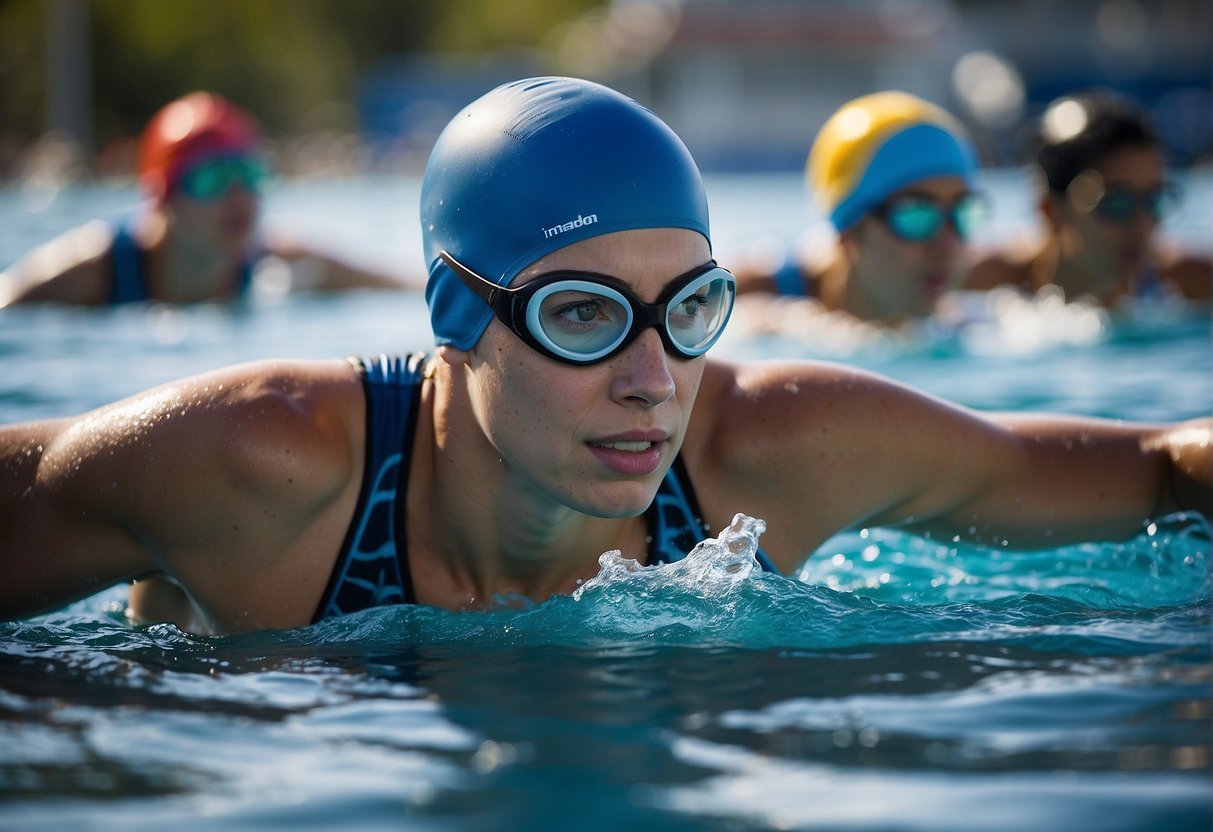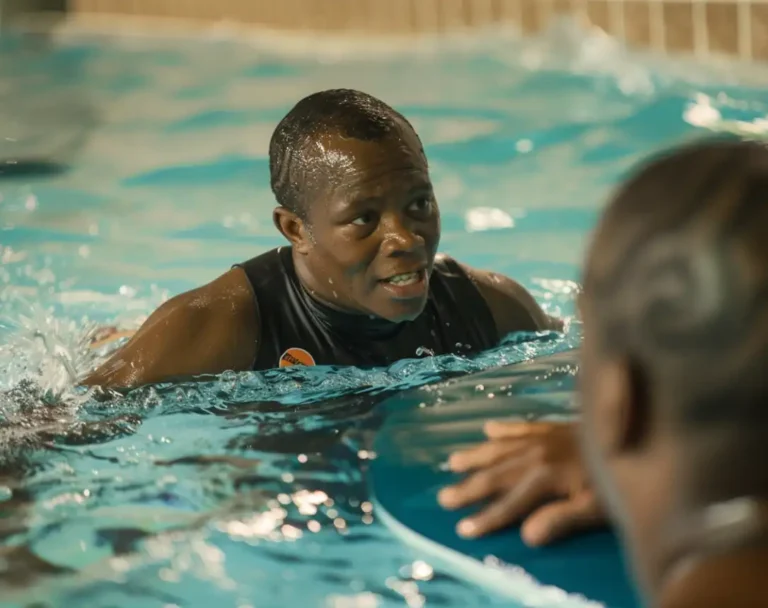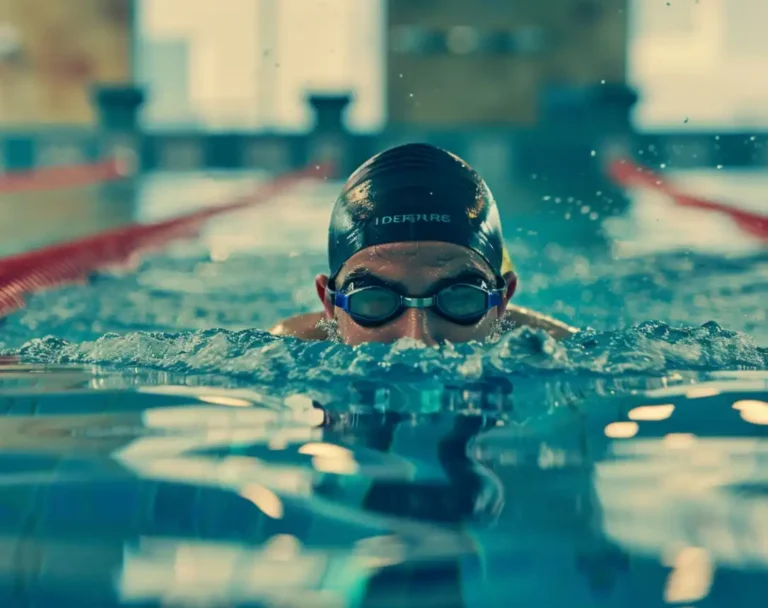Go the extra lap with “How to Improve Swimming Endurance: 7 Expert Tips,” where we dive into professional strategies to boost your stamina and performance in the water, ensuring you can swim longer, stronger, and more efficiently.
How to Improve Swimming Endurance? Build a Solid Foundation
Mastering the Basics
Before you dive into advanced workouts, ensure your swimming fundamentals are strong. Regularly practicing your strokes is key. By focusing on freestyle, breaststroke, backstroke, and butterfly, you achieve balanced strength across different muscle groups. Here’s a quick checklist for your strokes:
- Ensure proper body alignment and streamline
- Maintain consistent, rhythmic kicking
- Use bilateral arm movements for balance
- Practice drills that focus on each stroke
Developing Efficient Techniques
Efficient swimming technique is a major lever in your performance. Sharpening your technique allows you to swim longer without fatigue.
Freestyle: Aim for high elbow pulls and a strong, propulsive kick.
Breaststroke: Concentrate on a fluid, whip-like kick and arm motions synced with your breath.
Backstroke: Keep your hips high and initiate your stroke with your shoulder.
Butterfly: Focus on a powerful dolphin kick and simultaneous arm recovery.
Remember, smooth and steady wins the endurance race!
Optimizing Breathing Patterns
Your breathing is the rhythm of your swim – getting it right is pivotal. Here’s how to fine-tune your breathing patterns:
- Freestyle: Turn your head to breathe every three strokes to stay balanced.
- Breaststroke: Coordinate your breath with every arm stroke.
- Backstroke: Maintain a steady exhale underwater, and inhale when your arm lifts.
- Butterfly: Time your inhale with arms sweeping forward.
Practice these patterns until they become second nature. Optimized breathing complements your technique, enhancing your overall endurance.
Training Strategies for Enhanced Endurance
Incorporating Interval Training
Interval training is your secret weapon to boost endurance.
Workout Example:
| Set | Distance | Interval | Rest |
|---|---|---|---|
| Freestyle Swim | 100m | 1:30 | 30s |
| Descending Speed | 6×100m | – | 30s |
Start with a target pace; beginners could aim for 100 meters on a 1:45 interval, allowing for 30 seconds rest in between. As your fitness improves, trim down the rest period or quicken the pace. For competitive swimmers, tighter intervals on a 1:30 base will keep you on your toes, pushing your limits with each lap.
Establishing a Varied Workout Regimen
Diversity in your workout is key. Avoid monotony and engage different muscle groups by alternating strokes and mixing distances within your sessions.
Weekly Swim Plan:
- Monday: Long-distance, steady-pace swim
- Wednesday: Short sprints with high intensity
- Friday: Mixture of medium-distance sets focusing on form
Advancing with Swimming Workouts
Progress in your swimming endurance doesn’t have to plateau.
Advanced Set Example:
| Reps | Distance | Effort | Rest |
|---|---|---|---|
| 15×200m | Freestyle | Steady | 30s |
| 10×300m | Freestyle | Moderate effort | 30s |
| 1x (500m + 400m + 300m + 200m + 100m) | Freestyle | Descending Speed | 30s |
To swim faster and build stamina, progressively add distance to your main sets while maintaining or increasing your speed. Integrate breath control sets, where you limit your breathing per stroke to increase lung capacity and muscle oxygen efficiency, such as breathing every 7 strokes for a set of 50-meter swims.
Elevate your training, capitalize on these strategies, and watch as you cut through the water with newfound endurance and speed.
Strengthening Practices and Optimization

Enhancing Cardiovascular and Muscle Strength
To boost your cardiovascular fitness, consistency in training is the key. Your heart rate is the beat of your progress—regular aerobic exercise both in and out of the pool increases your heart’s efficiency. Incorporate interval training like swimming sets where you might do 10×100 freestyle, with rest intervals to push your energy capacity. Emphasize strength training with exercises that target key muscles used in swimming to augment your strength and muscle development. This multi-faceted approach enhances not just your stamina but also your overall fitness level.
Utilizing the Right Equipment
Selecting the right gear can significantly bolster your swim training:
- Kickboard: Use it to isolate and strengthen your leg muscles.
- Fins: They add resistance, making your legs work harder which, in turn, builds strength and power.
- Paddles: These increase resistance for your arms, enhancing upper body strength and stroke technique.
- Pull Buoy: Placed between your legs, it helps focus on upper body technique and strength.
Recovery and Injury Prevention
Your body needs time to heal and get stronger after intense workouts. Aim for 7-8 hours of sleep to facilitate adequate recovery and give your muscles time to repair. Cross-training activities like yoga or pilates can improve flexibility and reduce injury risk.
Remember, preventing setbacks is as crucial as pushing your limits; keep your strength and endurance gains consistent by avoiding overtraining and addressing any pains or aches promptly with rest or medical attention.
FAQ:
How do I increase my stamina for swimming?
Increase swimming stamina by incorporating interval training, increasing swim distances gradually, and improving technique with regular practice.
How long does it take to build up endurance in swimming?
Building endurance in swimming can take a few weeks to months, depending on your starting fitness level and training frequency.
How to swim longer without stopping?
Swim longer without stopping by pacing yourself, focusing on efficient breathing techniques, and maintaining a consistent stroke rate.
How can I swim without losing my stamina?
Swim without losing stamina by staying relaxed, using smooth strokes, managing your breathing, and taking breaks as needed to maintain energy.





